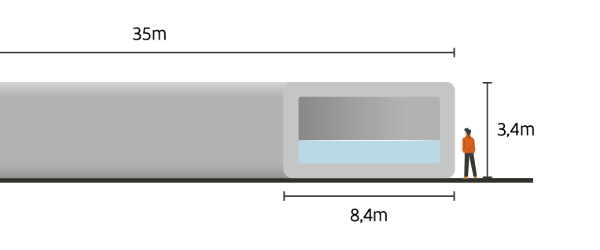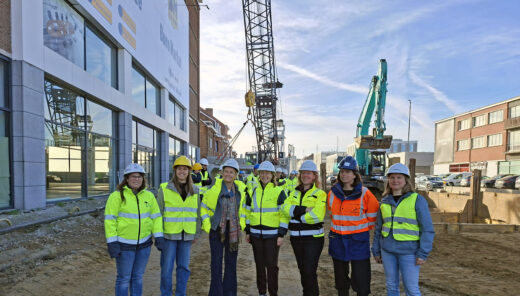N6 as a showcase for road safety and climate adaptation
The Bergensesteenweg (N6) in Sint-Pieters-Leeuw is undergoing a major redesign. The project integrates mobility, water management and liveability into one comprehensive approach. Together with clients AWV, Aquafin and the municipality of Sint-Pieters-Leeuw, Sweco is delivering a solution that minimises disruption while bringing benefits to residents, businesses and road users.

For the renewal of the N6, we combine the expertise of our most experienced teams: from Traffic & Mobility to Landscape & Public Space, and from Integrated Water Management to Civil Engineering and Hydraulics. Every detail matters, as this multidisciplinary project requires an overarching vision. Techniques such as directional drilling, a separated sewer system and hydrocarbon separators make an essential difference.

Safety and liveability firstAlong a 2.5 km stretch, the N6 will receive a new profile. The current 2×2 lanes will be converted to a 2×1 layout, creating space for cycling paths, dedicated bus lanes and wider sidewalks. Our design includes segregated cycle paths along the entire route to ensure safe cycling. The N6 is lined with many shops and even a shopping centre. To safeguard accessibility while improving liveability, local access roads with parking and green accents will be added at strategic locations. These access roads also reduce dangerous crossing movements.
Sweco coordinates all these works in close alignment with the road and sewerage operations. The result is a solution that meets Flemish climate objectives and fully adheres to the Blue Deal principles for sustainable water management. The outcome? Robust infrastructure built to last for generations.
Tim Vereertbrugghen, teammanager infrastructure
Smart water management above and below ground
To address flooding at its root, the road works are combined with a separated sewer system and additional buffering capacity. Beneath the roadway, concrete culverts are installed—each 4.5 metres wide and weighing 22 tonnes. With tongue-and-groove joints and rubber seals, they form an underground buffer that temporarily stores rainwater before releasing it slowly into the Zuunbeek.

When engineering meets nature
First, 500 foundation piles were installed to stabilise the ground. Three hydrocarbon separators of 38,000 litres purify the water from oil and fuel residues before discharge. In the new Wilderpark, we are creating an open infiltration area with four buffer basins and a natural layout, allowing rainwater to gradually seep into the soil. The park is already a green meeting spot with walking paths, timber boardwalks and play areas. Sweco is responsible for the integrated design and execution.

Reduced disruption thanks to directional drilling
A major Farys drinking water pipe (diameter 1000 mm) also runs beneath the N6. The large-scale roadworks offer the opportunity to replace it. As the pipe crosses the Zuunbeek, we are opting for an innovative solution: directional drilling over approximately 750 metres. This technique avoids reopening the roadway and significantly reduces disruption.
Autres actualités

N6 as a showcase for road safety and climate adaptation
Read more

Cloud-based platform for digital twins streamlines real estate management
Read more

Sweco builds an innovative youth care campus with Xplo
Read more

